How to grow poppies in your garden
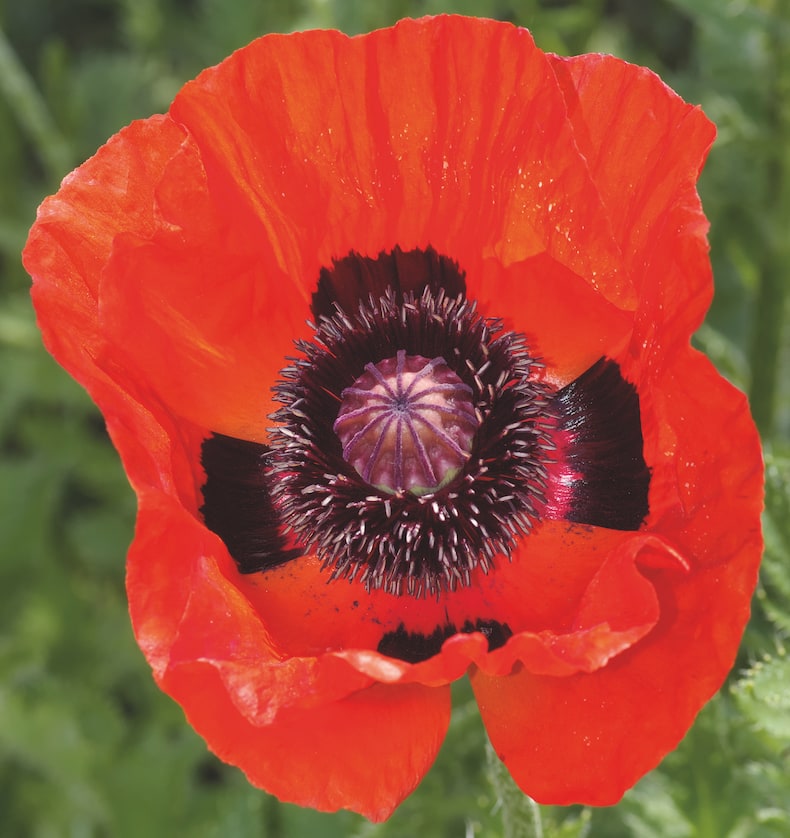
Poppies hold a special place in many people's hearts.
Image: Great Scarlet Poppy from Thompson & Morgan
Growing your own poppies from seed is an easy way to add striking swathes of colour to your garden, and a great filler for any unused space. Even better news? Once planted, they’ll come back year after year, forming graceful drifts over time.
Follow our simple guide on how to plant poppy seeds and you’ll soon have lots of these distinctive and delicate flowers to brighten up your beds and borders.
Which poppy variety should you plant?
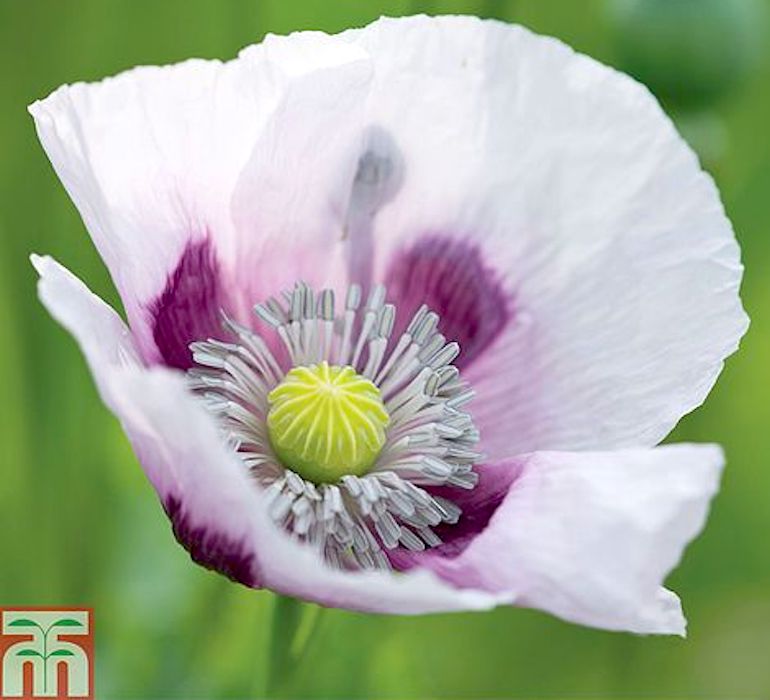
There's more to poppies than the iconic red flowers, as illustrated with poppy 'Album'.
Image: Clive Nichols
You can choose from approximately 120 different varieties of poppy including annual, biennial and perennial flowers. They come in a wide choice of colours - sow a mixture of poppy seeds for a naturalised wildflower garden look, or make a dramatic statement by sowing a single colour en masse.
The Flanders or field poppy (papaver rhoeas) is the simplest to grow, and is best known as a symbol of remembrance for soldiers who gave their lives in the first World War. It’s an annual, bee-friendly variety that’s ideal in a wildflower garden.
If you want a longer-term plant, biennial and perennial poppies make a vivid addition to your garden or border. Oriental poppies have larger, blousy flowers, while Icelandic and Japanese poppies come in unique shades like mauve and gold.
If you’re growing poppies for culinary use, the opium poppy is a good choice. The seeds can be eaten and are used for adding extra flavour, crunch and bite to breads and cakes. Be careful, as the seeds of many other poppy species are not edible. Also, you must not consume any other part of a poppy plant – they’re poisonous.
When to plant poppies
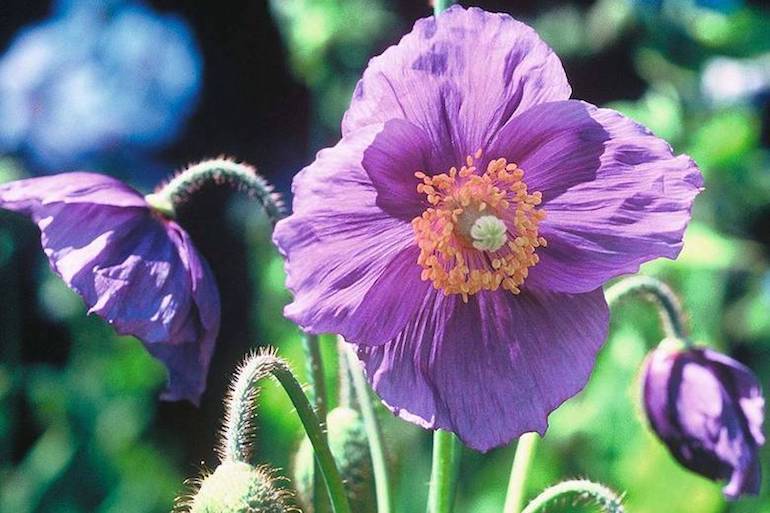
Choose an autumn-sow variety for a great display the following summer.
Featured product: Poppy 'Hensol Violet' from Thompson & Morgan
Sow poppy seeds directly into your garden in spring or autumn. If you’re planting early in the year, usually between March and May is best, but you’ll have to wait until the following summer for a healthy display. Sow between the end of August and October for more flowers in the first season.
Check the individual seed packet for when specific varieties should be sown.
How to sow poppy seeds
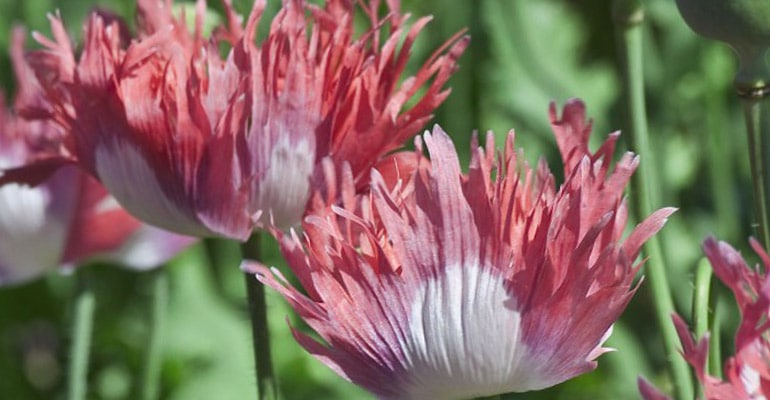
The elegant poppy 'Pink Fizz' has two-tone, pink bicolour blooms.
Image: Thompson & Morgan
- Choose a sunny spot with good drainage. Weed the area and rake to a fine tilth.
- Pour some poppy seeds into your hand and sprinkle them very thinly across the ground to create natural looking drifts.
- Allow 7-30 days to germinate, depending on the variety, soil condition and growing temperatures. Keep the soil moist during germination.
- Once the seedlings are large enough to handle, thin them out to around 30cm (12in) apart.
- Water the area regularly, especially during dry spells. Be careful not to overdo it as this encourages quick growth and leggy plants, or even rot.
Left it too late to start from seed? You can buy oriental varieties like the satin poppy as mature plants. Harden off outside for 2-3 days when all risk of frost has passed before planting out in fertile, well drained soil.
Top tips for growing poppies
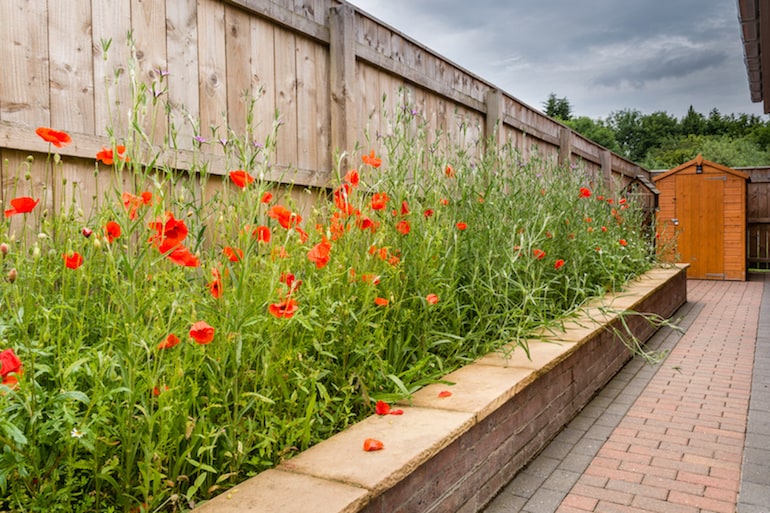
Poppies are a great way to fill unused space and are easy to care for.
Image: Shutterstock
- Water poppies during dry spells, but don’t oversaturate.
- Deadhead faded poppy flowers often to encourage more blooms.
- If left to seed poppies self-sow, so avoid unwanted spread by removing faded flowers in good time.
- To harvest seed pods, cut when the pods turn light brown and dry out for 1-2 weeks before breaking open and storing seeds in a jar for up to two years.
- Once annual poppies have gone to seed, pull up parent plants and compost.
- For biennials and perennials, cut back old foliage to ground level in autumn.
- Divide clumps of poppies in late summer when they’ve finished blooming. Take care, as early separation can damage sensitive taproots.
Poppies make up an important part of wildflower mixes, and are a particularly attractive pollinator plant to bring bees and butterflies to your garden - a great way to attract wildlife and get the kids interested in nature. Find lots of wildflower guides and articles for summer planting at our hub page, along with plenty of growing tips.
Sign Up For Exclusive Special Offers




© 2025 Thompson & Morgan. All rights reserved. A division of Branded Garden Products Limited.



